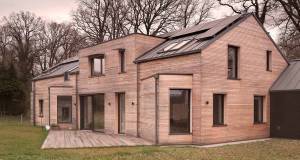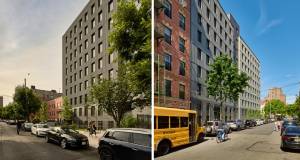
- Ventilation
- Posted
Study confirms “systematic inequalities” in indoor air pollution
A new analysis of the exposure of London households to indoor pollutants highlights “systematic inequalities” in exposure, overwhelmingly driven by factors beyond the control of those people worst affected.
This article was originally published in issue 39 of Passive House Plus magazine. Want immediate access to all back issues and exclusive extra content? Click here to subscribe for as little as €10, or click here to receive the next issue free of charge
The researchers from UCL in London, and Public Health England, investigated the socio-economic distribution of a wide range of factors that worsen the risk of poor air quality at home. Analysis of the available literature and datasets demonstrated that the great majority of these risk factors were worse for people in worse socioeconomic positions.
In contrast to the suggestions that people need more information or education to address poor indoor air quality (IAQ), the study found the inequalities were “structural,” i.e., built into the geography of the neighbourhoods and the construction of the homes that people occupy.
The low-income households worst affected are least likely to be able to make changes that would improve the situation, the study found. They usually cannot afford to move, often cannot afford to repair or replace appliances, and are more likely to be tenants and therefore dependent on landlord co-operation for remediation and repairs.
The team explored five factors that are known to affect exposure to indoor pollution: location and ambient outdoor levels of pollution; housing characteristics, including ventilation properties and internal sources of pollution; occupant behaviours; time spent indoors; and underlying health conditions.
Ensuring sufficient ventilation, and that mechanical ventilation is maintained and operational, would significantly reduce indoor air pollution exposures
The team focused on three pollutants known to have serious impacts on health and life expectancy: PM2.5, nitrogen oxides (NOx) and carbon monoxide (CO). Modelling was carried out to investigate the likely impact of combined factors such as airtightness, and indoor and outdoor air pollution.
For almost all the variables examined, factors that would increase exposure to, or harm from, indoor pollution were more common or more severe for populations with lower socioeconomic status. While a few factors (such as combustion of solid fuels and gas within the home) trended the other way, overall, the gradients of risk overwhelmingly advantaged more privileged households and neighbourhoods over those with lower incomes.
Thus, low-income households tend to have more people living in a smaller space. This is strongly linked to poorer indoor air quality, the researchers say. “Given an indoor source emitting air pollutants at a certain rate, a smaller volume will reach higher concentrations faster than the equivalent source for a larger volume,” the research says.
This is compounded by the higher risk that the ventilation is broken. “The EHS indicates that action is required to repair extractor fans in the lowest... income group in 57.5 per cent of houses versus only 7.7 per cent in the highest,” the paper concludes.
Low-income households typically occupy more airtight buildings, and homes with more adjoining dwellings. While this may reduce the amount of outdoor pollution entering, modelling by the team showed this is outweighed by the increased build-up of pollution from indoor activities such as cooking, laundry drying, etc.
On top of that, in homes with more adjoining dwellings, there is much higher risk of ingress of pollution from neighbours, either directly through poorly sealed walls or floors/ceilings, from communal circulation, or from neighbouring windows.
One of the commonest and most concerning “shared” pollutants is tobacco smoke. The more people you share a wall with, the higher the risk that at least one of them will be a smoker. And if you are in a low socioeconomic status neighbourhood, your neighbours are much more likely to smoke. “In 2018, 25.5 per cent of those in routine and manual occupations smoked compared with... 10.2 per cent of those in managerial and professional occupations,” the researchers found.
This concern is backed by research by Dr Jenny Brierly at the University of Sheffield, who found neighbours’ smoke – including, often, cannabis smoke — is a concern for many social tenants. Even when ventilation is available, people may not always be comfortable using it. Fuel poverty, outdoor pollution (e.g., roads, or people smoking on the doorstep), security concerns and noise all make it less pleasant to open vents and windows. The researchers cite a study showing that window-opening behaviours between households of different socioeconomic status may drive inequalities in carbon monoxide poisoning.
Outdoor air quality
The study also added to the growing body of research showing how severely unequal outdoor air quality is. Analysis combining data on socioeconomic status and air quality records showed that PM2.5 levels are higher in lower-income neighbourhoods. Even more striking is the gradient in proximity to HGV routes: diesel combustion is the largest source of oxides of nitrogen (NOx), which are known asthma triggers.
The study also found that the lower your income, the less able you are to make changes that would improve air quality at home. Low-income households in the UK are more likely to be tenants, and thus depend on a landlord for repairs that would improve IAQ, for example to boilers or ventilation.
They are also less likely to be able to afford to move to a quieter, safer neighbourhood farther from major roads and with fewer very close neighbours, as these will generally be financially out of reach (especially once travel costs are considered).
To reduce IAQ-driven health inequalities, it is essential to cut outdoor air pollution and improve the outdoor environment, the authors say. But buildings must be improved too. “Policies aimed at ensuring all housing has sufficient ventilation, and that mechanical ventilation is maintained and operational, would significantly reduce indoor air pollution exposures. Increased compartmentalisation between flats would help to reduce air pollution entering from adjoining dwellings.”
The government should put pressure on landlords to fix the problems the tenants have no control over, the authors say. “National housing policies that require the improvement of social and privately rented properties will benefit low-income individuals who are more likely to occupy these tenures.”







